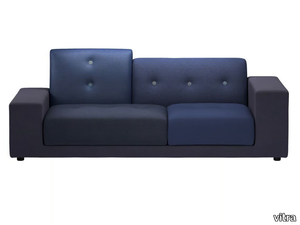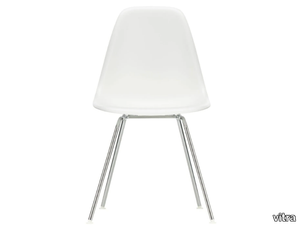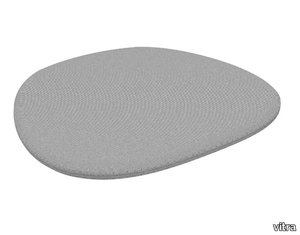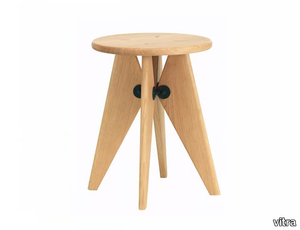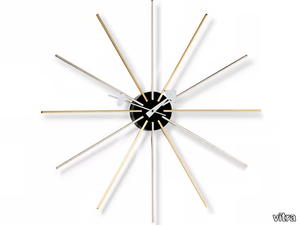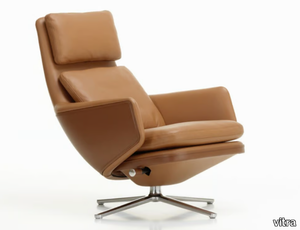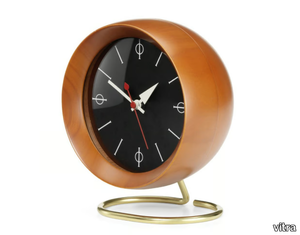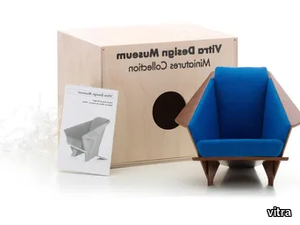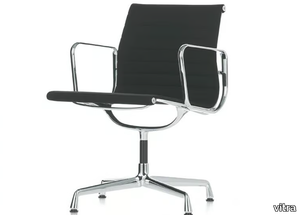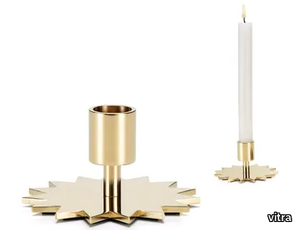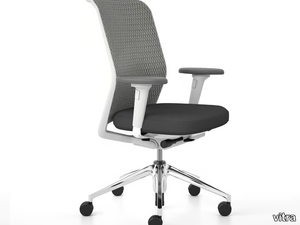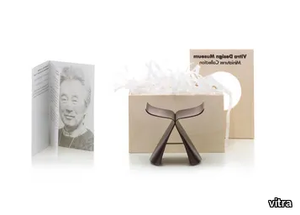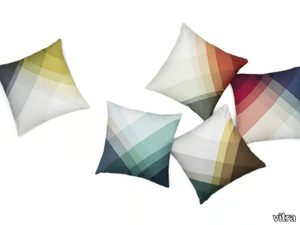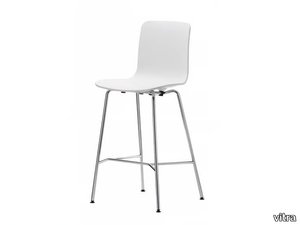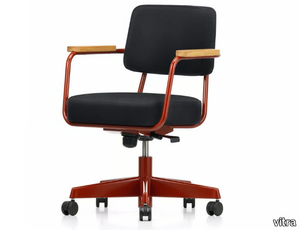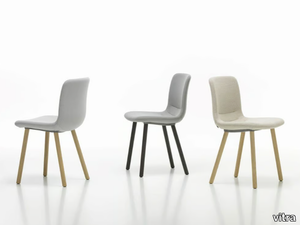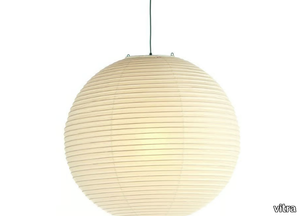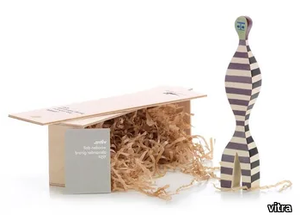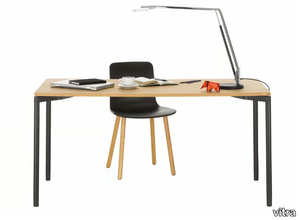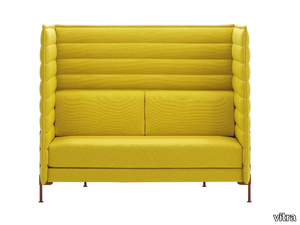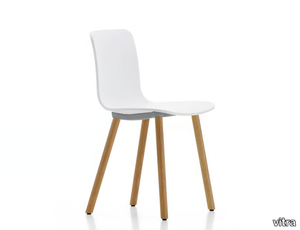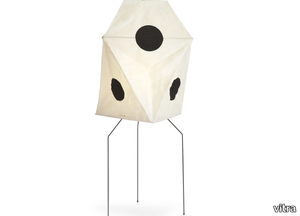Soft Pad Chair EA 222 – Lounge

vitra > Chair
Featuring a high backrest and a low seat, the Soft Pad Chair EA 222 by Charles and Ray Eames offers ultimate comfort – due in no small part to the chair's tilt mechanism, which adjusts to the weight of the individual user. The lounge chair can be attractively paired with the matching stool EA 223. Together, EA 222 and EA 223 form the perfect spot for long cosy evenings with a good book.
Miniatures Garden Egg
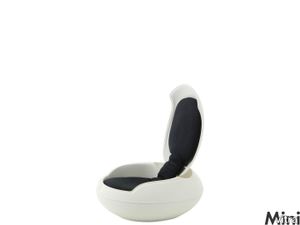
vitra > Styling
The Garden Egg was originally intended to be a garden chair. At that time Peter Ghyczy was working for the synthetics manufacturer Elastogran/Reuter in Lemförde. As leader of the design department, his tasks included exploring suitable areas of application for what were then new and particularly promising synthetic materials. The most prominent and later legendary example of this work was the Garden Egg.<br/><br/>As the name of the chair implies, this is an eggshaped object with a flat underside and a folding top. When open, the top forms the backrest. Inside there are soft cushions for comfort. When closed, the weather-proof, rain-proof 'shell' ensures that the chair can be kept outside all year round.
Ceramic Container No. 3
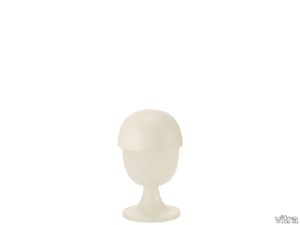
vitra > Styling
The hand-glazed Ceramic Containers (1952) derive from the original lathe-turned wooden objects by Alexander Girard. Their silhouettes are reminiscent of the traditional shapes of apothecary vessels, board game tokens or millinery blocks.
Plywood Group DCW

vitra > Chair
The DCW (Dining Chair Wood) bears witness to the ultimate success of Charles and Ray Eames' early experiments with moulding plywood into complex shapes. Made entirely of wood, the appearance of this iconic chair remains as contemporary today as when it was first conceived.
Wooden Doll No. 13
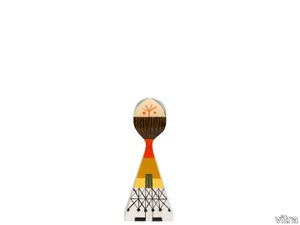
vitra > Styling
Alexander Girard originally created the Wooden Dolls (1952), a whimsical assortment of figures both joyful and grim, for his own home. Today they add a charming touch to any interior.
Soft Pad Chairs EA 217/219 – Work
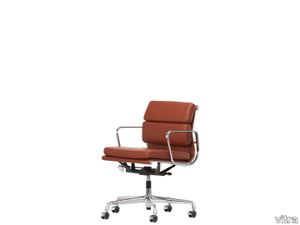
vitra > Office Chair
The models EA 217 and EA 219 are the office swivel chairs in the Soft Pad Group by Charles and Ray Eames. Their dignified aura makes them especially suited for management areas. The extraordinary comfort of the chairs results from the combined effect of their tilt mechanism, which can be adjusted to the user's weight, and the soft fabric- or leather-covered upholstery. The higher backrest of EA 219 distinguishes it from the Soft Pad Chair EA 217.
Wooden Doll Dog
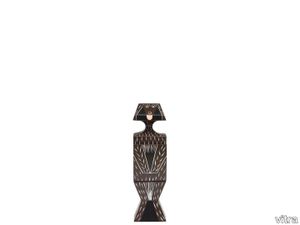
vitra > Styling
Alexander Girard originally created the Wooden Dolls (1952), a whimsical assortment of figures both joyful and grim, for his own home. Today they add a charming touch to any interior.
Akari 3X
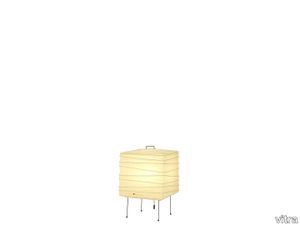
vitra > Styling
The Akari Light Sculptures (1951) by Isamu Noguchi are a series of luminaires, handcrafted from traditional washi paper by Japanese artisans. ‘The harshness of electricity is thus transformed through the magic of paper back to the light of our origin – the sun.’ (Noguchi)
Tip Ton RE
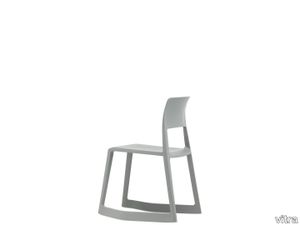
vitra > Chair
The all-plastic chair Tip Ton can be tilted forward a few degrees from the normal position. This forward-tilt position straightens the pelvis and spine and thus improves circulation to the abdominal and back muscles. <br/><br/>In 2020 Vitra developed a version of the chair that is manufactured from recycled plastic: Tip Ton RE. The high-quality recycling material stems from post-consumer household waste, particularly used packaging. Utilising this raw material instead of petroleum-based primary plastics generates 30% less climate-damaging emissions, with a significant reduction in primary energy consumption.<br/><br/>To achieve the required stability and quality, the recycling material is mixed with a proportion of glass fibres. The dark grey hue of Tip Ton RE is the natural shade of the processed recycling material, which therefore exhibits very slight irregularities in colour. <br/><br/>Tip Ton RE is itself 100% recyclable and can be stacked up to four chairs high.
Eames Segmented Tables Dining
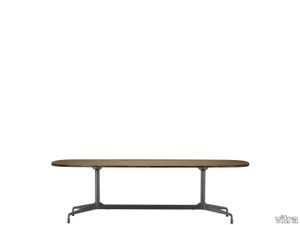
vitra > Table
Social gatherings at the home of Charles and Ray Eames were legendary. This was especially true when a meal was served. In addition to planning the meal, Ray immensely enjoyed preparing the table – a round Eames Segmented Table – with the aim of bringing pleasure to each individual guest. The arrangement of tablecloths, tableware, cutlery, vases and decorative objects resembled a freshly painted picture, whose shapes and colours complemented the food that was served, creating what resembled a small piece of art.<br/><br/>The role of a table extends far beyond aesthetic considerations, as it is the communal and convivial heart of the home – a place where people can connect. The emphasis on 'connection', as a universal element in both design and everyday life, is a recurring theme in the Eameses' work – even as a structural principle in their products: in the segmented base of the Eames Tables, a so-called spreader connector holds the base elements together and is an essential component, guaranteeing the sophisticated modularity of the entire table range. <br/><br/>The Eames Segmented Table (Dining) is characterised by an interplay of dimensions, materials and colours, transforming the legendary classic into a comfortable, elegant dining table. With a round or boat-shaped table top in a choice of sizes, it allows spontaneous and informal seating arrangements in diverse dining settings.
Lounge Chair & Ottoman
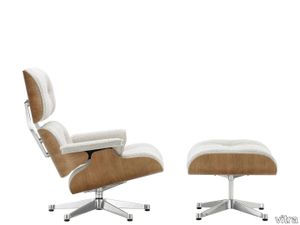
vitra > Chair
The Lounge Chair, created by Charles and Ray Eames in the 1950s, was designed with the aim of combining an elegant appearance with ultimate comfort. It has been produced by Vitra using virtually the same methods ever since, and is now recognised as a great classic of twentieth-century furniture design. Offered in two sizes and various combinations of leather or fabric upholstery covers, wooden shells and bases, the Lounge Chair is ideally complemented by the matching Ottoman.
Lounge Chair
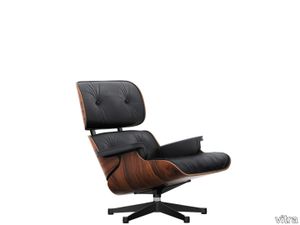
vitra > Chair
The Lounge Chair by Charles and Ray Eames is one of the great furniture designs of the twentieth century. Offering ultimate comfort, this elegant chair has been produced by Vitra since the 1950s using virtually the same production techniques and high-quality materials. The Lounge Chair comes in two sizes and various combinations of leather or fabric upholstery covers, wooden shells and bases.
Miniatures .02
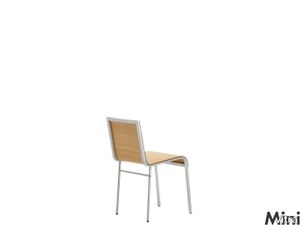
vitra > Styling
Belgian designer and interior architect Maarten Van Severen was an idiosyncratic figure on the international design scene. His work was noted for its intense engagement with a few basic furniture types, such as the chair, table, chaise longue, shelving and cabinet, for which he developed fundamental solutions. <br/><br/>Like Jean Prouvé, Van Severen regarded his experiments in the workshop and his close physical contact with the materials to be a vital element of the design process. This was the reason why, up until the mid 90s, when he started working with industrial partners, he produced all his designs in the workshop that he had set up in 1987. <br/><br/>This included the CNº II chair (later .02), introduced in 1992. This chair, with its simplicity of form, has a seat and backrest crafted from a continuous piece of material – a sheet of aluminium or thin plywood – set on an aluminium base. The CNº II formed the basis for his subsequent collaboration with Vitra to develop the .03 chair, which was introduced to the market in 1998 and marked his international emergence as a designer.
Ceramic Container No. 2

vitra > Styling
The hand-glazed Ceramic Containers (1952) derive from the original lathe-turned wooden objects by Alexander Girard. Their silhouettes are reminiscent of the traditional shapes of apothecary vessels, board game tokens or millinery blocks.
Fauteuil Kangourou
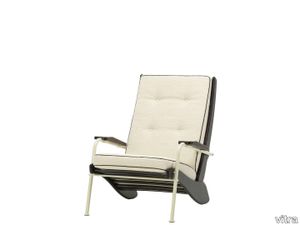
vitra > Chair
Vitra has reissued the Fauteuil Kangourou in collaboration with Catherine Prouvé, the daughter of Jean Prouvé. In the second limited edition, the lounge chair pairs a dark oak base structure with metal legs in the original hue Prouvé Blanc Colombe; the cushions are covered in a softly woven, light-coloured bouclé fabric with contrasting dark brown piping.<br/><br/>Fauteuil Kangourou is limited to 100 pieces in this version and is only available directly from Vitra.
Key Ring - Elephant
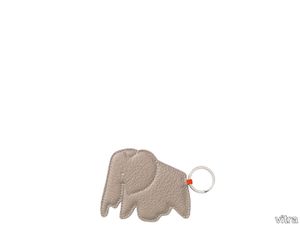
vitra > Styling
For the Key Ring motif, Dutch designer Hella Jongerius took her inspiration from an emblematic image in the history of Vitra: the elephant. It served as a model for a playful decorative object created by Charles and Ray Eames back in the 1940s, which was recently reissued by Vitra. The Key Rings are made of high-quality Vitra furniture leather with pleasant tactile qualities.
Akari 1N

vitra > Styling
The Akari Light Sculptures (1951) by Isamu Noguchi are a series of luminaires, handcrafted from traditional washi paper by Japanese artisans. ‘The harshness of electricity is thus transformed through the magic of paper back to the light of our origin – the sun.’ (Noguchi)
Coconut Chair
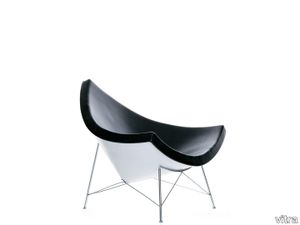
vitra > Chair
The comparison of the Coconut Chair to an eighth of a sectioned coconut goes back to the designer himself, George Nelson – a prominent exponent of American mid-century modernism. However, the colour scheme of this iconic, spacious lounge chair is reversed: the outside of the plastic shell is white, while the comfortable one-piece upholstery is covered in high-quality leather or fabric in a variety of colours.
Eames Fiberglass Side Chair LSR
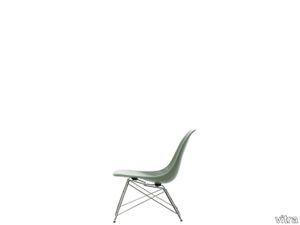
vitra > Chair
The compact LSR chair is a member of the extensive family of Fiberglass Chairs and was a favourite of Charles and Ray Eames: they utilised several throughout their legendary home, the Eames House in Pacific Palisades, particularly as seating options for conversations with guests. Unlike the Plastic Chair LSR, the Fiberglass Chair LSR is only suited for indoor use.
ID Soft
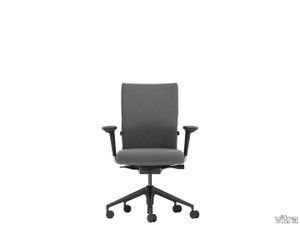
vitra > Chair
The fully upholstered backrest of ID Soft ensures a high level of comfort, while its clean lines and reductive forms lend the chair an understated presence. ID Soft therefore blends in perfectly with diverse architectural environments. Thanks to its height-adjustable backrest, ID Soft provides adequate support in the upper shoulder region for even very tall users.
Ronan Bouroullec Drawing Poster, green
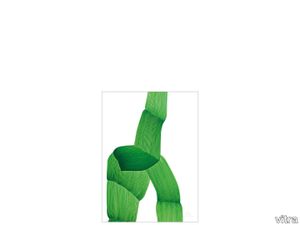
vitra > Styling
The drawings of Ronan Bouroullec exemplify the practice of 'intuitive drawing', derived from Surrealism's literary roots and its écriture automatique.
Miniatures Heart-Shaped Cone Chair
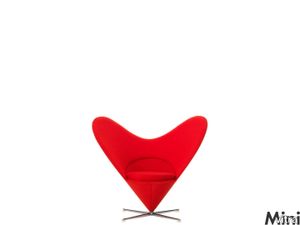
vitra > Styling
In the thirties and forties, Scandinavian design followed the principles of functionalism: simple structures, clear lines, a lightweight visual appearance. The desire for austerity of form was combined with a preference for wood as a natural material.<br/><br/>It was not until the fifties that young designers like Verner Panton began to use the formal possibilities created by innovative technologies in order to liberate furniture from the constraints of tradition. Verner Panton wrote of his works: »I try to forget existing examples, even if they are well made, and find my own way of coming to terms with the materials. The result seldom has four legs, not because I do not want to make a chair but because working with new materials like wire mesh and polyester demands new forms.« <br/><br/>The Heart Shaped Cone Chair embodies the transformation that took place in Scandinavian design in the late fifties. The purist furniture of lassical modernism was now joined by sculptural forms inspired by the new technologies. At the same time, the shape and color of the Cone Chair anticipate the »Pop Art« furniture of the sixties.
Compas Direction
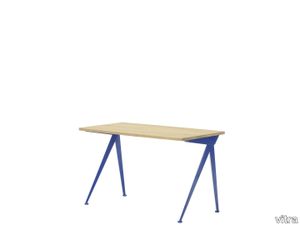
vitra > Table
The slender, elegantly splayed legs of Compas Direction, designed by Jean Prouvé in 1953, call to mind the hinged arms of a compass – 'le compas' in French. With its compact dimensions, the desk is ideal for the contemporary home office.
Grand Sofà Ottoman
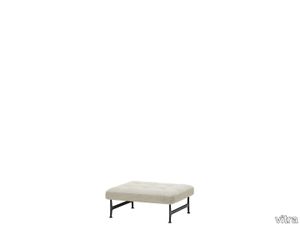
vitra > Pouf
Grand Sofà (2017) is Antonio Citterio's interpretation of luxurious comfort and contemporary design. The designer's Italian flair for lightness and elegance is united with the trademark quality and precision of the Swiss company Vitra.
Miniatures DCW

vitra > Styling
In 1940, Charles Eames and Eero Saarinen developed a chair with a novel plywood seat molded into a three-dimensional form for a competition sponsored by the New York Museum of Modern Art. However, it was not possible to produce the chair commercially, due to inadequate technical methods. It was seldom possible to press the plywood into a three-dimensional form without it breaking or splitting. During the following years, Charles and Ray Eames concentrated their efforts on developing a new method.<br/><br/>The plywood chairs DCW (Dining Chair Wood) and LCW (Lounge Chair Wood) are the result of this long-term experimentation. In 1945, Charles and Ray Eames returned to the idea of a seating shell made out of molded plywood; however the results were unsatisfying. They dispensed with the multifunctional shell and divided the seat and back into separate, freely articulated elements connected by a spine (frame). Each element has a clearly defined function, which it fulfills optimally with a minimum amount of material. »Shock mounts« – rubber disks bonded onto the wooden surface – connect the seat and back with the frame, which exists in wood or metal and in two different heights, either as a dining chair or lounge chair.
